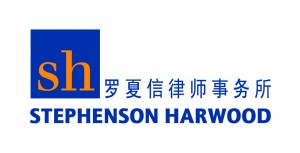11 October, 2016
There have been a number of comments from construction industry participants following my brief post in respect of the recent decision of the High Court in Hong Kong in CHUN WO BUILDING CONSTRUCTION LTD v. METTA RESOURCES LTD [2016] HKCFI 1357. I have, therefore, prepared the following commentary for those interested in a more detailed account of the project, the decision, and the Court’s comments in relation to management of construction litigation.
Background
Tsz Shan Monastery is a large Buddhist temple located in Tai Po, surrounded by mountains and the sea. The construction, development and operation of the Monastery was supported by the Li Ka-shing Foundation. The defendant, Metta Resources (“Metta”), the was the employer of the project.
The dispute arose out of the Main Contract awarded to the plaintiff contractor, Chun Wo Building Construction (“Chun Wo”) in late 2010 for a price of approx.HK$434m, and involved the construction of a two-storey podium, temples, dormitory blocks, associated structures, a 70 metre high Guan Yin statute, and a plaza for worshipping the statute.
Chun Wo brought claims against Metta for (i) payment for work done and materials on and off-site; (ii) extension of time; and (iii) loss and expense, or alternatively, damages arising from delay and recovery of sums deducted as liquidated damages (“LD”). Metta counterclaimed for defects, contra charges and liquidated damages.
Findings
Chun Wo succeeded in most of its claims. Briefly, the court found that:
1. Metta was in breach of its implied terms of co-operation, non-hindrance and non-prevention in interfering with Hsin Yieh Architects & Engineering Ltd’s (“HYA”) function as an independent architect under the construction contract, finding that Metta’s representatives interfered with HYA’s function in granting EOT, deciding whether the Certificate of Non-Conformance should be issued and other matters which should have been HYA’s responsibilities.
2. As a result of the above, the contractual machinery had broken down, and as such, there was therefore no reason precluding adjudication by the court on claims initiated against Metta as employer, nor could the latter rely on its own wrong to capitalise on failure to comply with contractual formalities to deny Chun Wo’s entitlement to recover for work done.
3. Metta issued a notice to Chun Wo to delete remaining works, at which time practical completion was deemed to have been achieved. Given the definition of practical completion – where the building constructed is ‘ready for occupation and use for their intended purposes, and are free from known omissions and deficiencies’ – the Court held that as a matter of contractual construction, Chun Wo was under no obligation to rectify defects as alleged by Metta, nor were such obligations consistent with Chun Wo’s obligation to leave the project site upon practical completion without delay.
Care and conduct of construction litigation
The case has generated interest amongst the general public, attributable largely to the alleged involvement of Mr. Li Ka-shing, one of Asia's wealthiest people. Although referred to by the Court, it was dismissed as nothing more than background information which Chun Wo had overplayed.
More importantly for construction practitioners, the case is of some significance as it highlights criticism from the Court in respect of the manner in which construction litigation is conducted.
The Court acknowledged that the case was an "unexceptional" construction dispute, ultimately a fairly simple contract claim, but which, in the Court's words was "contested with scant regard to costs or proportionality", with the parties resolving to bombard the court with a vast amount of documentary evidence which was clearly disproportionate to the nature and complexity expected of such cases.
It should be noted that the case was heard over 35 sitting days, with the Court noting that:
- each party had engaged 4 counsel;
- the trial bundle consisted of over 120 box files;
- there were 531 variation claims in issue and 1661 line items in Metta’s schedule of defects;
- there were over 25 factual witnesses and 11 expert witnesses called for cross-examination; and
- Metta’s closing submissions consisted of over 800 pages.
The Court noted that this might have been attributable to the fact that the parties were “at loggerheads and extremely litigious", and that the vast amount of documents were "perhaps a tactic to swamp the opponent".
In light of the above, the Court elaborated on two key issues: pleadings and expert evidence, each of which is dealt with briefly below.
Pleadings
By its very nature, a pleading is only intended to be a "road map" of the disputes and as such, only material facts should be pleaded. There was "no good reason to render the pleadings impenetrable by including minute details, evidence and arguments. The basic rules must be followed and enforced by the court", and as such, "Unhelpful pleadings must be nipped in the bud".
The Court was critical of the use of pleadings in this case, stating:
“It must be self-evident that the amount of papers generated by the pleadings have made them anything but useful. This is reflected by the very limited number of occasionswhen they were referred to in the course of this trial. These documents simply do not fulfil the function of pleadings. It is an indictment of the system and those who created such documents that voluminous pleadings have become the norm in construction litigation.” (emphasis added)
The Court remarked: "[w]hat happened in this case is that the tail was wagging the dog" and that the problem with voluminous pleadings was that it was irrelevant, hindered the progression of the case, inhibited effective case management and hindered proper investigation by the experts. The following examples were given to illustrate the point:
- There is no reason why the parties should include minute details in respect of the defects claims because (i) to do so would involve enormous resources and costs; and (ii) it was inevitable that expert evidence would ultimately be adduced in respect of the defects claims;
- It was not necessary for Metta to serve upon Chun Wo all of the alleged defects set out in the non-comformance register; rather, it could have only referred to the relevant NCFs and list them out in an appendix; and
- Once the expert reports on the claims became available, it would become clear which claims would be disputed and the parties should have considered whether some of their claims should be abandoned, such approach being "conducive to keeping the pleadings within reasonable length so that they can serve their function properly’
Litigants who put forward unhelpful pleadings could be expected to justify the costs incurred even if they succeed in their actions and that the court might in appropriate circumstances, penalise litigants with adverse cost orders or even strike out the irrelevant pleadings of its own motion.
Expert Evidence
The Court noted that the instruction of a single joint expert should become the norm, and the burden is on the parties themselves to justify why such an expert should not be preferred over separately instructed experts, highlighting the following benefits of instructing a single joint expert:
- It was conducive to producing less documents, a shorter trial, an early hearing date and ultimately a swifter resolution and reduction in costs;
- Less opportunity for litigious parties to challenge the impartiality of the expert witnesses. In the Court's words: "despite the enhancement of the rules on impartiality of expert witnesses introduced under CJR, a determined litigant would not shy away from attempting to influence the evidence of such a witness. The instruction of single joint experts would render such challenge redundant. Impartial expert evidence is essential for arriving at a just decision; and
- Helping the parties and the Court focus on a handful of real issues so that the cross-examination could be conducted efficiently and expeditiously.
Commentary
In many jurisdictions, including Hong Kong, construction disputes are commonly arbitrated; the veil of confidentiality results in few details becoming publicly known about the facts and the decision. This case is therefore a relatively rare example of a significant construction dispute aired in public, and while the Courts’ comments in relation to the management of the dispute were of course based on the facts before it, its comments regarding the use of pleadings and experts has a wider application to construction practitioners.
In determining the allocation of costs, it is generally accepted that the court will start from the basic principle that “costs follow the event”, such that the successful party should recover a good portion of the costs it has expended. In light of the Court’s comments in this case, it remains to be seen how this will be dealt with and the level of recovery for the contractor; one would expect that at the very least there may be an almighty battle on taxation, further adding to the costs of the proceedings.
The case is a timely reminder that there is at least one common feature in running a large scale construction dispute and running the project itself – effective management.
For further information, please contact:
Phillip Rompotis, Partner, Stephenson Harwood
phillip.rompotis@shlegal.com

.jpg)





